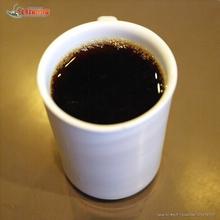Introduction of Fruit-flavored Coffee beans from Panamanian Rosa Coffee Manor
The Panamanian National Assembly is a unicameral system that exercises legislative power. It is composed of 70 members who are directly elected for a term of five years. The current Parliament was formed on 1 July 2009, and the seats occupied by the various parties are as follows: 36 seats for the Democratic change Party (member of the ruling coalition), 17 seats for the Democratic Revolutionary Party, 12 seats for the Panamanian Party, 4 seats for the Nationalist Republican Freedom Movement (member of the ruling coalition) and 1 seat for the people's Party. Sergio Galvez, chairman of Congress, was elected on July 1, 2012 for an one-year term. [5]
The government
The current government of Panama was formed on July 1, 2009. the main members are: vice President Juan Carlos Varela, Minister of the Presidential Office Jimmy Papadimitriu, Foreign Minister Fernando Nunez Favre, Minister of the Interior Jorge Ricardo Favre, Minister of Public Security Jose Raul Mulino, Minister of economy and Finance Frank George de Lima Minister of Commerce and Industry Ricardo Quijano, Minister of Agriculture and Animal Husbandry Oscar Armando Osorio Kassar, Minister of Health Javier Diaz, Minister of Housing Yasmina Pimentel (female), Minister of Labour Armah Lorena Cortez (female), Minister of Social Development Guillermo Ferrufino, Minister of Education Lucy Molina (female), Minister of Public works Jaime Ford Minister of small and medium Enterprises Heathrow Brillo (female), Minister of Canal Robert Roy, Minister of Tourism Salomon Sama
The species of Geisha was discovered in the rose forest of Ethiopia in 1931 and sent to the Coffee Institute in Kenya. Introduced to Uganda and Tanzania in 1936 and Costa Rica in 1953, Panama was introduced in the 1970s by Mr. Francis Coselazin of the Dongba Seventh Farm Garden, which received seeds from CATIE in Costa Rica and began to grow rosy summer coffee. Panamanian specialty coffee is divided into small batches and numbered, small batches are designed to be small capacity for optimal management, and classification numbers allow buyers to understand and track the information of the whole process.
Because of its small quantity, Panamanian coffee products are based on special coffee. The state provides its high-quality products to specialized stores all over the world, such as Denmark, Britain, Greece, Norway, Sweden, South Korea, Japan, Taiwan Province of China and the United States. There are also many excellent manors in Pokuit producing areas, except the famous Emerald Manor, Alida Manor, Aqaba Manor and so on, all of which produce high-quality boutique coffee. This is not only due to the superior ecological conditions of the Pokuit region of Panama and the fertile volcanic ash soil of the Baru volcanic land. Another important factor is that the microclimate in the Poquet Heights of Panama is a unique and important resource for boutique coffee in the Pokuit region. This is the Panamanian environment from east to west, which allows the cold air to converge over 6500 feet through the Central Mountains, thus creating a variety of microclimates in the Pokuit region, making its temperature and rainfall very suitable for plant growth. so the coffee trees grown here are in good condition.

Important Notice :
前街咖啡 FrontStreet Coffee has moved to new addredd:
FrontStreet Coffee Address: 315,Donghua East Road,GuangZhou
Tel:020 38364473
- Prev

Introduction to the flavor and taste characteristics of Rwanda boutique coffee bean manor with balanced taste
Rwanda has been growing coffee since colonial times. Although the crops are mainly coffee, the quality of coffee produced in Rwanda is not outstanding, and its status in the coffee world is low, and few people pay attention to it. Most of the coffee varieties grown in Rwanda are bourbon. Rwanda, known as the country of Thousand Hills, has a high-altitude mountain environment, fertile volcanic soil and abundant precipitation.
- Next

The taste is mellow and rich Indonesian Mantenin Fine Coffee Flavor Manor Introduction
In March 2014, Indonesian President Susilo Bambang Yudhoyono signed Presidential Decision No. 12 of 2014, formally abolishing Circular No. 6 of 1967 and renaming China (cina) as China. Proclamation No. 6 of 1967, a product of the era of former Indonesian President Suharto, contains discrimination and insults against the national character and personality of China and Chinese. The local Chinese said that for more than 40 years, discriminatory terms against China and Chinese will go away.
Related
- Detailed explanation of Jadeite planting Land in Panamanian Jadeite Manor introduction to the grading system of Jadeite competitive bidding, Red bid, Green bid and Rose Summer
- Story of Coffee planting in Brenka region of Costa Rica Stonehenge Manor anaerobic heavy honey treatment of flavor mouth
- What's on the barrel of Blue Mountain Coffee beans?
- Can American coffee also pull flowers? How to use hot American style to pull out a good-looking pattern?
- Can you make a cold extract with coffee beans? What is the right proportion for cold-extracted coffee formula?
- Indonesian PWN Gold Mandrine Coffee Origin Features Flavor How to Chong? Mandolin coffee is American.
- A brief introduction to the flavor characteristics of Brazilian yellow bourbon coffee beans
- What is the effect of different water quality on the flavor of cold-extracted coffee? What kind of water is best for brewing coffee?
- Why do you think of Rose Summer whenever you mention Panamanian coffee?
- Introduction to the characteristics of authentic blue mountain coffee bean producing areas? What is the CIB Coffee Authority in Jamaica?

